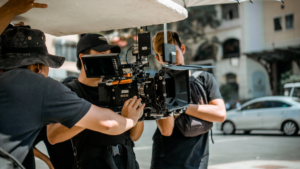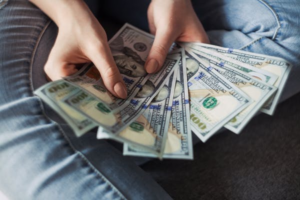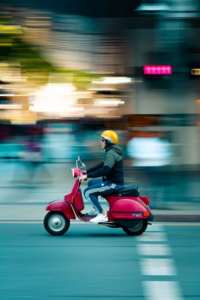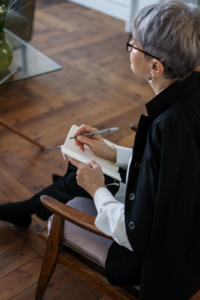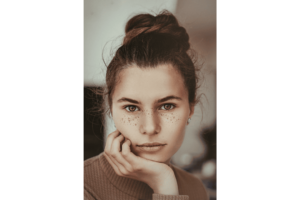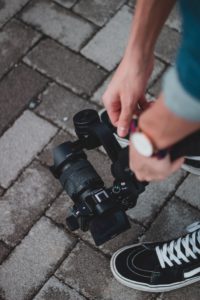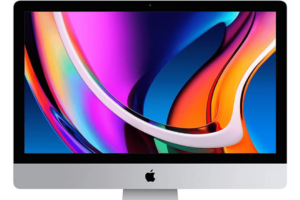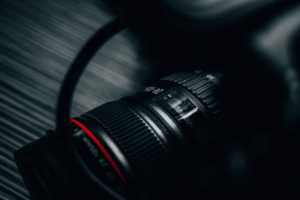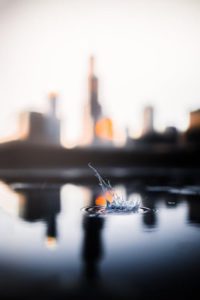We all know that the fanciful settings in substantial blockbuster movies seem unimpressive on set these days. But, on the other hand, filmmakers are using green screens (along with a lot of help from visual effects artists and composers) to create worlds that have a fantastic feeling of realism.
Green screen is a technology that dates back to the early 1900s. The blue screen was initially more popular because of its compatibility with celluloid film. However, with the growth of digital filming, green screens are becoming more frequent and feasible.

What is Green Screen and How Does it Work?
Green screen is a visual effects (VFX) method that involves layering (compositing) two pictures or video streams together. For example, consider Hollywood movie bloopers reels or behind-the-scenes footage. The overwhelming abundance of green on site is difficult to ignore.
A green screen lets you place any backdrop picture you desire behind the performers and in the front. It is a simple way to add the desired background behind the subject/actor/presenter in film production. The green screen comes to the rescue when the scene is unavailable, such as a fictional, alien, historical, futuristic, or even a difficult-to-access locale.
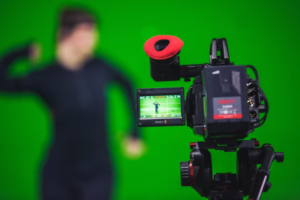
When a superhero movie is being made, the actor who plays the superhero may be photographed lying on his stomach in front of a green screen with a giant fan blowing his hair and cape back behind him. The green background can then be replaced with a moving image of the night skyline behind the actor, giving the impression that he is floating through the sky.
How is Green Screen Processed?
- The new background is composed into the scene (that is, two pictures or video streams are blended).
- The chroma key isolates the desired color (typically green) and removes it digitally by making it transparent. This allows the other image to be seen.
- When combined with more advanced 3D techniques, this technology can add any new element (smoke, fire, rain, etc.) to complex moving scenes.
Avengers- Before and After Green Screen
Why the Color Green?
Technically, any color background is acceptable. However, a brilliant, almost fluorescent green is a common choice because it is bold and usually a radically different color from anything on the subject (e.g. the actor’s attire, eyes, hair, and accessories).
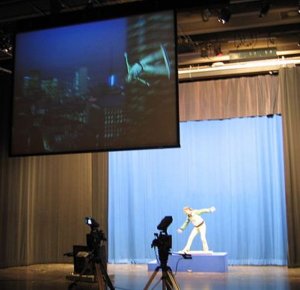
Green sensors have twice as many red or blue sensors in a camera, making them significantly more sensitive and less light. In other words, because the sensors are more sensitive, the green channel of the camera has less noise. Remember that this only applies to a specific shade of green.
Furthermore, the blue resembles the sky, making the task more complicated if we wish to record outside. On the other hand, the blue screen is required for recording at night or with a highly dark image. Finally, green and blue are the most popular hues since they contrast with skin tones.
However, green is not always the best option. For example, Kermit the Frog wouldn’t be filmed against a green screen because he would vanish. Instead, a blue screen, often known as the “second-in-line” color, would be used in this situation.

The main criterion is that no two colors should be the same. In addition, the subject’s background must be utterly different from the topic itself. So, for example, if your actor is wearing a bright green tie in front of a green screen, he will wind up with a translucent strip down his chest where the tie should be.
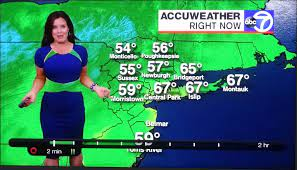
Blue screens are increasingly being employed in photography because of their relaxing and mood-enhancing properties. However, digital technology has gained a more substantial following using the green screen. This is because the green color captures light more efficiently, resulting in a better effect. Conventions, conferences, and trade exhibitions are examples of venues that use green screen technology. In addition, concert and athletic event marketing initiatives have produced incredible results.
How to Make the Most out of Green Screen?
No Green or Reflective Surfaces
Green should be avoided like the plague. If the individual wears or holds something green, the areas will be transparent after chroma-keying.
You should also avoid reflective materials. Shiny objects (such as glasses, colossal jewelry, props, and so on) will absorb the green from the screen and become translucent. However, very little jewelry is usually acceptable.
Apply Makeup to the Actors
Actors appear pale and sickly in front of a green backdrop. As a result, you may need to make some cosmetic changes.
Allow Depth
You will need to back up the camera to get a full shot of your actor, as well as a good separation between the subject and the green screen. For a full-length shot that does not shoot off the corners of the background, you will need 25-30 feet of depth, depending on the lens.
Use a “Coved” Green Screen
The green screen must continue down the wall and onto the floor beneath their feet to show your actor/subject from head to toe.
The transition from the wall to the floor will be smoothed out using a cove (a curved corner where the wall meets the floor). Again, shadows and harsh lines that generate gradient shifts in the green backdrop should be avoided.
Use Soft and Even Lights
Light the green screen as smoothly as possible to achieve a similar texture and gradient. The better and easier it is to control the material, the more even the illumination is. Maintain a constant color spectrum by keeping the green screen as clean and smooth as feasible. If the screen is made of cloth, check for creases. If your furniture is painted, keep extra paint on hand to touch up scuffs and scratches.
Light Separately
To avoid: a) the topic throwing shadows on the background and b) a green hue bouncing off the subject, which may cause problems when removing the background, the green backdrop should be lighted independently from the subject. This is also why the distance between the background and the subject should be at least six feet.
Keep the Camera Still
Keep the camera still for simple green screen images. When the camera moves even slightly, lock down the subject, so it doesn’t appear to be vibrating or bouncing against the background. Zooms also have an odd appearance. Your subject will appear to shrink or enlarge in proportion to the environment. For more complex 3D scenes, you can use motion control and motion trackers, but the VFX team will have to do a lot more work.
Opt for a Chroma Key Software that Works for you
Based on the shots required, the editing system, the budget, and the user experience, research and consider the software. The type of shot will primarily determine your Chroma Key software selections. Free, user-friendly software is available for essential scenes, but it won’t replicate the more sophisticated effects seen in feature films.
Indoor and Outdoor Recording
Place two spotlights at a 45-degree angle and mid-height from the green screen on either side. When recording outdoors, repeat the same when the light is evenly distributed across the screen.
Illuminate the Subject and Screen Separately
You should keep the subject at least six feet away from the screen to avoid color contamination in the subject and shadows. Always light the actor the same way the backdrop image is lit.
Take Care of the Wrinkles on the Muslin Cloth
Muslin is a fragile fabric made of materials such as silk or cotton. It was first transported into Europe from India in the thirteenth century, originally from Mosul, Iraq. However, it was not until the nineteenth century that it became popular in North America. It is a vaporous, thin, and transparent cloth that resists overheating and is frequently used in the production of green screens.
Muslin tends to wrinkle, so make sure the green screen is wrinkle-free when it’s time to record.
ISO Settings
Set your camera’s sensitivity to the lowest setting to reduce image noise and improve screen performance. You will end up with a cleaner image.
The Temperature of the Color
Your camera’s color temperature must match the color temperature of the lighting you are utilizing. You can use a photometer or the camera’s inbuilt exposure capabilities to estimate the light intensity.
Focus on the ‘Focus’
Keeping the actor or item in focus is critical so that the boundaries are more defined, and you can edit the green screen more easily.
Size of the Green Screen
There are a few things to think about here. Consider the size of the green screen you want and whether it will be adequate for your needs. When installing your green screen, keep in mind that if you choose a model without support, you will need a way to hang it. Furthermore, if you need to work in various locations, we recommend selecting an easily portable screen.
Things to Look for Before Purchasing a Green Screen
Now that you have learned the fundamentals of this audiovisual tool, let’s go over some of the aspects you should think about before purchasing your green screen and putting your imagination to work. The below-listed factors will assist you in selecting the model that best suits your preferences and projects.
Size
Size matters, both in terms of the job you want to complete and the area you have available. With a few exceptions, most models on the market will measure up to 9 by 15 feet, as you can see from our choices. Check that the proportions of the green screen you’re interested in fit the type of project you’re working on before buying it.
In the same line, if you want to make your own tiny set at home, you should pay attention to the size. You can easily extend the green screen without any hindrances if you have ample space. Do not forget to follow the recommendations we have given you earlier regarding the distances necessary to obtain optimal results.
Accessories
You must examine everything you require to make your thoughts a reality. You may not need anything other than the fabric (if you already have a support beam and lights). In this instance, the green color will suffice. In that situation, the most basic option should suffice—as long as the size is appropriate, of course.
On the other hand, if you are trying to start your little studio, you’ll probably want to go with something more professional. Obtain a complete set, which includes supports, lighting, and various screen colors, among other things. You may let your creativity go wild with everything you need right at your fingertips.
Transportability
When purchasing your green screen, this is a critical consideration. Consider where you would like to record and photograph. As previously mentioned, some versions are far more portable than others; you will want something quick and simple to set up. Although you can move all models in our collections, some are more difficult to assemble than others.
You will not need to hunt for a model whose significant characteristics are lightness and portability if you have already set up your set in a specific location and do not plan on relocating from there. You have the final say, but making an informed decision is always the best option.
Color
You must, of course, select the color of your screen. While the focus of this article is on green screens, we have also covered the possibilities of using other colors for chroma key compositing.
As previously indicated, blue screens are the second most prevalent color for this technique. Gray, white, and black are other colors that can be useful in various situations. Based on your project, select the color or colors you require.
User Reviews
A book’s cover is not always indicative of its content. We do not recommend buying a product without reading what other people have said about it. These evaluations usually contain helpful information, and the green screen’s total rating might give you a good notion of its quality.
Furthermore, there are dozens of film or photography forums where you may debate green screens or produce various effects. We strongly advise you to take advantage of the fantastic online library. We are convinced that you will find people working on projects similar to yours and that their advice and expertise will assist you in deciding between alternative models.
If you are looking to purchase green screens, you can check out the following links:
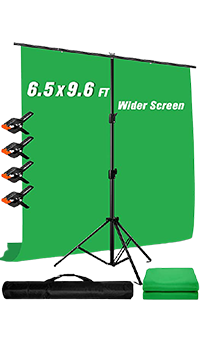

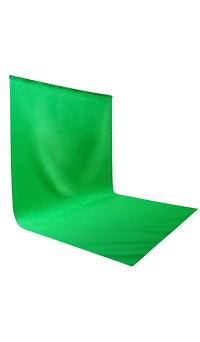
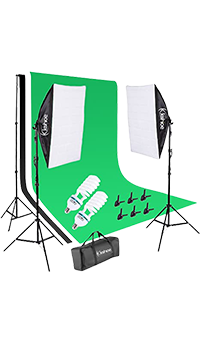
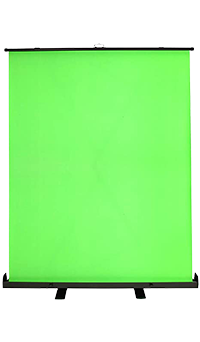
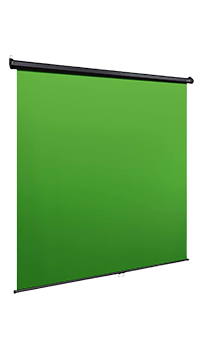
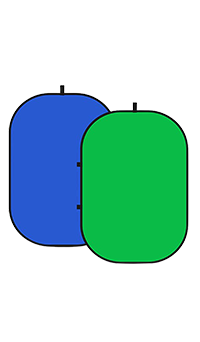
Predecessors to Green Screen
You use double exposure to insert components into a scene that were not there in the initial exposure before the development of traveling mattes and optical printing. For example, where you would use a green screen nowadays, this was done with a black drape. In 1898, George Albert Smith was the first to adopt this method. In 1903, Edwin S. Porter’s film The Great Train Robbery used double exposure to add background scenery to windows that were black on set, employing rubbish matte to expose only the window portions.
A traveling matte was required to make up the correct background in each frame so that figures in one exposure may realistically move in front of a replaced set. Frank Williams patented a traveling matte technique in 1918, which was based on a black background once again. This was included in several films, including The Invisible Man. In his Alice Comedies in the 1920s, Walt Disney employed a white backdrop to integrate human actors with cartoon creatures and surroundings.
Creating the Green Screen Effect
Shoot Footage in Front of a Green Screen
The first step is to capture footage in front of a green screen and save it as a media file. Please ensure the following for the optimization of the green screen effect:
- Plenty of light is diffused evenly around you and does not cast shadows.
- You are in front of a smooth, crease-free background. The color green or blue is suggested for your background.
- Your camera’s resolution is high enough that the footage isn’t pixelated or blurry. It’s best to use footage that’s at least 720p HD.
Add Media to the Processing Software’s Timeline
Import and add the footage you wish to utilize for the Green Screen effect to the Timeline once you’ve captured it. Remember to place the green screen footage in the Video 2 track and the clip you would like to utilize as the background in the Video 1 track.
Open the Clip Editor
Double-click the green screen clip in the Timeline to access the clip editor. Then, go to the Color Keying tab in the clip editor.
Use the Color Chooser Tool
To apply the effect, select the color picker tool and then click anywhere on the green screen film.
Programming for Green Screen
Color keying in software can be implemented in various ways, each with its advantages in terms of quality and speed. A function f(r, g, b) is applied to every pixel in the image in most versions. The meaning of (alpha) is comparable to that of alpha compositing techniques.
- α ≤ 0: The pixel is entirely engulfed by the green screen.
- α ≥ 1: The foreground object completely engulfs the pixel.
- Intermediate values indicate that the pixel is partially engulfed by the foreground object (or transparent).
- Use the function g(r, g, b)→ (r, g, b) to remove the green spill on the foreground items.
- An (r+b) Bg, where A and B are user-adjustable constants with a default value of 1.0, is the green screen’s elementary f() function.
- (r, min(g,b), b) is the very basic g(). This is comparable to analog and film-based screen-pulling capabilities.
Two closed nested surfaces in 3D RGB space, typically rather complicated, best describe modern examples of these functions. Green screen refers to the colors on the interior of the inner surface. Foreground colors outside of the outer surface are opaque. Colors between the surfaces are partially obscured; the closer they are to the outer surface, the more opaque they become. More closed surfaces are sometimes used when determining how to remove a green spill.
f() may additionally use the (x, y) position, the values of surrounding pixels, the value from reference photos or a statistical color model of the scene, and values from user-drawn masks. These result in closed surfaces with more than three dimensions in space. A different type of algorithm seeks to find a 2D path that connects the foreground and backdrop. This path can be the output, or the image can be produced as a last step by filling the path with α = 1. The use of active contour is an example of such an algorithm. In recent years, most research has focused on these algorithms.
Conclusion
The green screen has been a groundbreaking technology throughout the twentieth century and into the present. For example, Who Framed Roger Rabbit, which won several Oscars for its spectacular effects and ushered in a new era in filmmaking with actors interacting with ‘invisible’ cartoon co-stars, employed the green screen to merge live-action and animation in 1988. Multimillion-dollar blockbusters use this versatile technology to generate astounding effects, but nowadays, even low-budget productions may profit from the green screen miracle.
